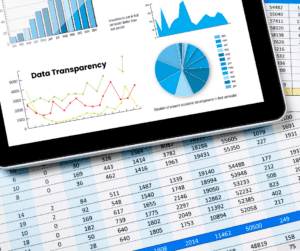A newly enacted federal law, the Financial Data and Transparency Act (FDTA), promises to make it easier to research some parts of government-spending reports. But whether it will speed up tax-break analysis is still unclear.

FDTA requires that at least some parts of Annual Comprehensive Financial Reports — or ACFRs, the audited spending reports governments issue after closing out their fiscal years — be published in a way that is machine-readable. Machine-readable format, like eXtensible Business Reading Language (XBRL), are far better than PDF or HTML because the text and data in a document are “read” and can then be analyzed by user-created taxonomies.
For tax-break watchdogs, the FDTA upgrade may dovetail nicely with a government accounting reform that is already changing the conversation about economic development costs and benefits.
That reform — GASB Statement No. 77 on Tax Abatement Disclosures — requires most localities, including school districts, to report in their ACFRs how much revenue they are losing to corporate tax breaks.
The results have been exciting – or frightening, depending on how you look at it. Our most-recent analysis of the information — reveals that at least 149 school districts across the country lose more than $1,000 per student per year to corporate tax abatements.
We revealed that no single school district lost more to corporate tax abatements than Philadelphia’s — losing $112 million in FY 2019, where students suffer in classrooms contaminated with lead and asbestos.
We compile GASB 77 data in our database, Tax Break Tracker. It’s slow, cumbersome work because ACFRs are not uniform or machine-readable: some are PDFs, some are HTML, some use tables, others describe their finances in long, confusing narrative text. This makes it quite taxing (pun intended) for anyone collecting and analyzing data across multiple years and jurisdictions.
That’s why FDTA is potentially such great news. If, as it is implemented, FDTA covers the Notes passages of ACFRs (where GASB 77 data appears), researchers, financial analysts, academics, and citizens curious about their taxpayer dollars will be able to access and understand government spending faster and more easily. That’s what we emphasized in In our Good Jobs First letter of support for FTDA.
To be clear, under FDTA, what (the substance) is reported will not change, only how (the data formatting). Machine-readability will improve the efficiency of creating, reporting, and using data; and enhance the accessibility, comparability, and transparency of financial data, making ACFRs more user-friendly.
But whether those advantages will cover the Statement No. 77 Notes on tax abatements is unclear. The law provides vague direction about the forthcoming requirements. Over the next two years, the Securities and Exchange Commission (SEC) will draft the new rules, and interested parties will have an opportunity to provide feedback during a public comment period on them. Good Jobs First will encourage the SEC to include Statement 77 disclosures as part of the new data formatting guidelines, and continue pushing state and local leaders to follow their own accounting rules and include that data.
After the SEC finalizes the rules, state and local governments will have two years to bring their financial reporting into compliance – likely around FY 2027.
Hopefully, FDTA will then help people better understand how tax expenditures — including economic development tax abatements — are such important issues, and whether they are a better use of public money than paving the streets, launching a new after-school program, or helping small businesses open and grow.